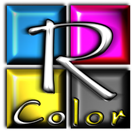Introduction to Digital Printing
Digital printing transformed the modern printing industry with its unmatched flexibility, fast turnaround, and print quality. Unlike the traditional offset process, digital printing does not rely on printing plates and can print output directly from electronic sources. Such simplification of the process enables businesses to achieve faster production, lower cost on low-volume runs, and more freedom for customization. As customization and speed demand increases in 2025, becomes increasingly ubiquitous.
Advantages of Digital Printing in Modern Applications
Economical for Low-Volume Production
Digital printing does not use high setup charges and printing plates. Digital printing is ideal for small runs, and businesses can simply print what they need without wastage. For printing business cards, flyers, and labels, digital printing is cost-effective without compromising any quality.
On-Demand Personalization
One of the most attractive benefits of printing is that it is customizable. Variable data printing allows each printed piece to be personalized—perfect for promotional campaigns that require personalized names, addresses, or promotional messages. Personalization boosts customer interaction and conversion.
Brief Turnaround Period
Because there are no long setup processes involved, printing offers faster job completion. Files can be delivered directly to press and printed in a matter of minutes. It is therefore the ideal solution for close deadlines and last-minute revisions.
Continuous High Quality
Digital presses create rich uniform color and crisp resolution. Unlike traditional printing that is susceptible to variation for long runs, digital printing never alters during the run. It is thus perfectly suited for branding materials requiring uniform images and colors.
Materials and Compatibility in Digital Printing
Wide Range of Substrates
Printing can accommodate a variety of materials including paper, card, vinyl, and plastics. This means businesses can select the most appropriate substrate for the project needs, whether for packaging, signage, or promotional items.
Green Alternatives
As more attention is being placed on sustainability, printing has several green advantages. With reduced waste material and no chemical handling of plates, it has a lighter environmental footprint.
The Application of Digital Printing in Branding and Marketing
Developing Brand Identity
Printing enables organizations to maximize branding by having the capacity to make sure that all printed materials—like brochures, business cards, and packaging—have consistent appearances. The rapid capacity for changing designs means that organizations can be reactive with branding updates.
Enabling Multichannel Campaigns
Printing makes it possible to print fast and uniformly across different touch points. From event banners to direct mailers, its effectiveness enables synchronized marketing campaigns, particularly those directed at specific geographic or demographic markets.
The Future of Digital Printing: 2025 Trends
Integration with Digital Platforms
Digital is becoming more integrated with online ordering systems and automated workflow. Customers can send designs online, receive instant proofs, and approve projects without any human intervention, further streamlining the process.
Personalization Supercharged by AI
In 2025, printing will be combined with artificial intelligence to create even more personalized output. With AI, it is possible to analyze customer data and generate hyper-personalized marketing materials, which are printed on-demand with printing.
Higher Resolution and Ink Technology
Ink chemistry and printhead technology innovation continuously push the limits of quality. printing presses are now able to match the color vibrancy and clarity, along with the classic offset print, and are more than capable of creating high-end marketing materials.
Conclusion
Printing today is no longer a choice but the go-to solution for businesses that require flexibility, speed, and customization. As technology continues to evolve, its benefits in customization, quality, and ease of use with digital workflows will continue to rise. For businesses considering Las Vegas custom printing solutions, printing offers innovation and ease. From brochures and packaging to bespoke marketing campaigns, it offers a sustainable and scalable solution. In the last two years, digital printing has not only transformed the way businesses approach printed communication but has also transformed customer expectations. As Las Vegas custom printing expands, the printers who embrace these trends are the ones that will be ahead. Investing in digital printing machinery places you in a position to take advantage of the speed, accuracy, and Las Vegas custom printing personalization that today’s consumer requires with zero turnaround time.
FAQs
What are the differences between digital printing and offset printing?
No plates are required in digital printing, and it can be printed straight from digital files. This is faster and less expensive for tiny print runs and one-offs.
Is digital printing suitable for high volume printing?
Even though offset remains cost-effective for very large print runs, digital printing is narrowing the gap since it’s efficient and flexible. For medium print runs, it’s an ideal choice.
Is custom design possible with digital printing?
Yes. The biggest advantage of digital printing is that it can do special graphics and variable data on each piece without sacrificing speed.
Is digital printing eco-friendly?
Yes. It is more energy-efficient, wastes less, and does not utilize chemical-intensive processes, making it a more sustainable process than the traditional process.


